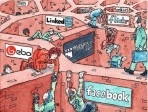 01:00:00
01:00:00
‘Against images made by hands’: Florence Nightingale’s reluctant life in portraiture
Florence Nightingale disliked having her portrait taken as much as she hated being a celebrity, yet it was largely through the visual representations of her face and person in the press that she gained iconic status in Victorian England. Used as a mo....
More details | Watch now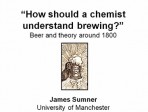 00:43:00
00:43:00
‘How should a chemist understand brewing?’ Beer and theory around 1800
Eighteenth-century chemists could gain useful income and patronage as advisors to industry – and some of the wealthiest and most influential industrialists were brewers. Making chemical knowledge credible to this audience, however, was not always e....
More details | Watch now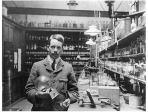 00:42:00
00:42:00
‘Sacrifice of a genius’: Henry Moseley’s role as a Signals Officer in WWI
Henry Gwyn Jeffreys Moseley (1887-1915) was one of the foremost English physicists of the early twentieth century. Probably best remembered for his immense contributions to chemistry and atomic physics in the years immediately prior to the outbreak o....
More details | Watch now 00:47:00
00:47:00
‘Behold a New Thing in the Earth!’: Reflections on Science at the Great Exhibition
The Great Exhibition of 1851 has routinely been portrayed as a celebration of science, technology, and manufacturing. However, for many contemporaries – including Prince Albert – it was a deeply religious event. In analysing responses to the Exhi....
More details | Watch now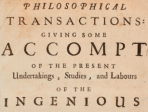 01:11:00
01:11:00
(Re)Inventing science publishing: the Philosophical Transactions of the Royal Society
Philosophical TransactionsÊis the worldÕs first and oldest scientific journal. Still published by the Royal Society, it is about to mark its 350th anniversary, and was instrumental in establishing many forms and facets of modern scholarly publishin....
More details | Watch now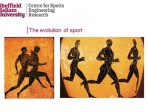 01:29:00
01:29:00
A high jump for science
Sport science is a discipline young in its years compared to medicine and astronomy but over recent years the pursuit of excellence in sport has driven it on. As we approach the London 2012 Olympics we look at what developments have been made in this....
More details | Watch now 00:44:00
00:44:00
A history of autism: my conversations with the pioneers
In this talk, Adam Feinstein will describe two fascinating journeys of discovery: his travels around the world for his new book, speaking to the key pioneers in the history of autism - including close colleagues and relatives of Leo Kanner and Hans A....
More details | Watch now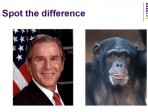 01:16:00
01:16:00
A molecular window into speech and language
Our capacity for complex speech and language remains one of the most intriguing aspects of being human. It has long been suspected that some answers to this enigma will be found buried within the genome. With recent advances in genetic technologies, ....
More details | Watch now 01:01:00
01:01:00
A natural history of scientists
For most of his life, Richard Fortey, has worked with collections in London's Natural History Museum, so curation has become a kind of unbreakable habit for him. In his Michael Faraday Prize lecture he will present another collection: his own persona....
More details | Watch now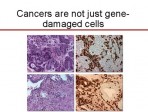 00:52:00
00:52:00
A silent killer?
In communicating the challenges and hopes for the future, Professor Fran Balkwill of Queen Mary's School of Medicine and Dentistry will demonstrate how cancer scientists can help patients and their families, as well as inspire young people to take up....
More details | Watch now 01:14:00
01:14:00
About Time
'If you knew Time as well as I do,’ the Mad Hatter says to Alice, ‘you wouldn’t talk about wasting it. It’s him.’ In this event, three writers well-acquainted with time discuss how it (or he) both controls and captivates us. Dame Gillian ....
More details | Watch now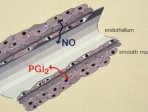 01:09:00
01:09:00
Adventures in vascular biology
Thirty years ago it was thought that the endothelium, a layer of thin, flat cells that line the interior surface of blood vessels was inert. However, major discoveries since then have demonstrated that it is a highly metabolic organ involved in maint....
More details | Watch now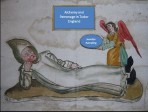 00:39:00
00:39:00
Alchemy and patronage in Tudor England
Dr Jenny Rampling, Dept. of History and Philosophy of Science, Cambridge. In early modern England, alchemical practitioners employed a range of strategies to win the trust and support of powerful, even royal, patrons: from the preservation of healt....
More details | Watch now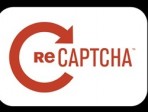 00:46:00
00:46:00
Augmented intelligence: the Web and human computation
This talk is about harnessing human time and energy to address problems that computers cannot yet solve. Although computers have advanced dramatically in many respects over the last 50 years, they still do not possess the basic conceptual intelligenc....
More details | Watch now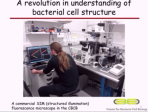 01:10:00
01:10:00
Bacterial cell walls, antibiotics and the origins of life
The cell wall is a crucial structure found in almost all bacteria. It is the target for our best antibiotics and fragments of the wall trigger powerful innate immune responses against infection. Surprisingly, many bacteria can switch almost effortl....
More details | Watch now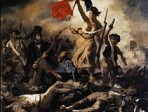 01:30:00
01:30:00
Behaving badly
Are environment, or genetics, more to blame when a human being turns to a life of crime? What does it mean to be criminally insane? And how effectively can a criminal tendency be treated with drugs? What different lights can literature and science sh....
More details | Watch now 00:55:00
00:55:00
Benjamin Franklin in Europe: electrician, academician etc.
Benjamin Franklin, American patriot and natural philosopher, was born 300 years ago. Apart from a brief stay in England as a young man, he spent the first fifty years of his life transforming himself from a nobody into the leading citizen of Philadel....
More details | Watch now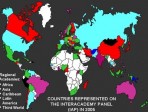 01:19:00
01:19:00
Beyond the human genome project
Dr Lander and his colleagues have developed many of the key tools and generated many of the key information resources for modern mammalian genomics. Their work includes mapping and sequencing of the human, mouse, and other genomes. He was elected a m....
More details | Watch now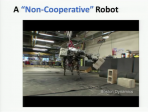 00:24:00
00:24:00
Bioinspiration: something for everyone
George Whitesides is the Woodford L. and Ann A. Flowers University Professor of Chemistry at Harvard University. Best-known for his work in NMR spectroscopy, organometallic chemistry, molecular self-assembly and nanotechnology, here he introduces sof....
More details | Watch now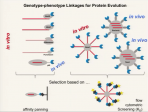 00:32:00
00:32:00
Bioinspired genotype–phenotype linkages
Florian Hollfelder is based in the Department of Biochemistry at the University of Cambridge. He is interested in mechanism in chemistry and biology. Here he describes using principles of natural selection to make functional proteins.
More details | Watch now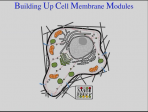 00:34:00
00:34:00
Bioinspired membrane-based systems
Directrice de Recherche Patricia Bassereau, Institut Curie Centre de Recherche Laboratorie Physico-Chimie, France, speaks on bioinspired membrane-based systems for a physical approach of cell organization and dynamics: usefulness and limitations.
More details | Watch now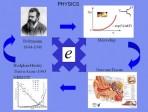 01:07:00
01:07:00
Bioinspired technology: from cochlear implants to an artificial pancreas
Biology is inspiring technology, which in turn replaces biology. This global trend towards ageing populations, less active lifestyles and fast-food diets, is leading to more cases of, and earlier onset of, chronic conditions such as Type 2 diabetes a....
More details | Watch now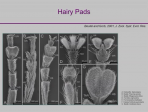 00:33:00
00:33:00
Biomimetic adhesive microstructures
Stanislav Gorb is Professor of Zoology at the University of Kiel, Germany, with an interest in functional morphology and biomechanics. Here he discusses clustering as a form of self-assembly, and applications in adhesion.
More details | Watch now 01:12:00
01:12:00
Brain development and brain repair.
The human brain is made up of close to a trillion nerve cells (or neurons), each of which makes connections with, on average, hundreds of other nerve cells, to form the complex neuronal circuits that control all brain activities, including perception....
More details | Watch now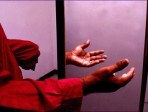 01:20:00
01:20:00
Brain function: synesthesia and phantom limbs
Professor Ramachandran examines problems that lie at the interface between neurology and psychiatry. He explains how phantom limbs may be used as a probe to understand brain functions and will also discuss synesthesia, a condition in which sounds and....
More details | Watch now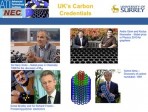 01:01:00
01:01:00
Carbon electronics
From structure and topology, to mechanical and electronic properties, a seemingly simple change in bonding between carbon atoms can conceive a plethora of material types. With diamond and graphite known since antiquity, better understanding of the sy....
More details | Watch now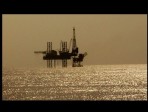 01:02:00
01:02:00
Carbon storage: caught between a rock and climate change
Bakerian Prize Lecture by Professor Herbert Huppert FRS Institute of Theoretical Geophysics at the University of Cambridge. Since the formation of the Earth, the global mean surface temperature, carbon dioxide (CO2) and methane content of the at....
More details | Watch now 00:47:00
00:47:00
Chasing Venus: the race to measure the heavens
New York Times Best Selling and award-winning author Andrea Wulf tells the extraordinary story of the first global scientific collaboration set amid warring armies, hurricanes, scientific endeavour and personal tragedy. On 6 June 1761 and 3 June 1769....
More details | Watch now 01:07:00
01:07:00
Climate change and extinction
Today countless protected areas for biodiversity are maintained at huge public and private expense. The question we must consider is whether our protection strategies actually protect when the real threats are related to the current climate change. M....
More details | Watch now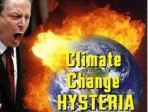 01:05:00
01:05:00
Climate change on the living Earth
Observations from around the Earth suggest that even the gloomiest predictions of climate change from the 2007 IPCC report may underestimate the seriousness of the changes due this century. In this lecture, Professor James Lovelock discusses the cons....
More details | Watch now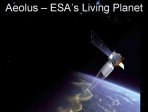 00:47:00
00:47:00
Climate change: space and our own planet.
Dr Maggie Aderin develops instruments that monitor climate change. Find out about these and other missions that are making science count in the battle against climate change. With practical experiments to show how climate change works Maggie shows ho....
More details | Watch now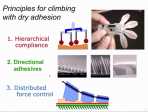 00:26:00
00:26:00
Climbing with adhesion
Mark Cutkosky is Fletcher Jones Professor of Mechanical Engineering at Stanford. Here he discusses climbing robots and how they can take their cue from nature.
More details | Watch now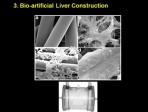 01:04:00
01:04:00
Cloning, stem cells and regenerative medicine
Extraordinary opportunities to study the molecular mechanisms that cause inherited diseases are being provided by new methods of producing stem cells. Hear about not only the potential value of these new methods, but also how their development was pr....
More details | Watch now 01:07:00
01:07:00
Cognitive enhancing drugs: neuroethical issues
Cognitive enhancing drugs are used to treat neuropsychiatric disorders such as Alzheimer's disease, schizophrenia and attention deficit hyperactivity disorder. These drugs improve the quality of life and wellbeing for patients and their families.
More details | Watch now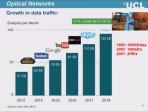 01:04:00
01:04:00
Communicating with light
Most of the data we generate and receive (whether emails, tweets, videos or mobile calls) are now carried by optical fibres, which use light to transmit vast quantities of information over trans-oceanic distances. The use of hundreds of wavelengths ....
More details | Watch now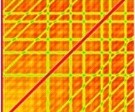 00:17:00
00:17:00
Complex Quantum Systems and Number Theory
The last few years have seen the emergence of remarkable connections between fluctuation statistics in complex quantum systems and some long-standing and important problems in number theory, such as the distribution of the primes. They are still myst....
More details | Watch now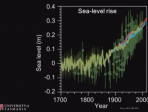 01:05:00
01:05:00
Continental loss: the quest to determine Antarctica’s contribution to sea-level change
For over 50 years scientists have been working to understand Antarctica’s contribution to sea level. For much of this time there has even been disagreement about if this massive ice sheet is growing or shrinking. In 2012, advances in data analysis....
More details | Watch now 00:56:00
00:56:00
Continuing the voyages of the Endeavour
NASA Administrator Mike Griffin's address applies certain lessons learned from one of the Royal Society's greatest explorers to the endeavours NASA is carrying out today in exploring the planets, moons, asteroids, and comets of our solar system and o....
More details | Watch now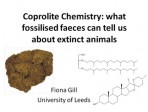 00:29:00
00:29:00
Coprolite Chemistry – what fossilised faeces can tell us about extinct animals
Faeces contains a complex mixture of chemical compounds, including substances from the diet and digestive processes. By better understanding the biology of extinct animals we can gain insights into how they interacted with their environment and poten....
More details | Watch now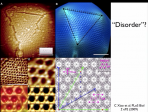 00:33:00
00:33:00
Crystals: animal, vegetable or mineral?
Stephen Hyde is Professor in the Department of Applied Mathematics and the Research School of Physics and Engineering at the Australian National University in Canberra. Taking the popular children's game as a starting point, he asks whether crystalli....
More details | Watch now 01:14:00
01:14:00
Cuckoos and their victims
The sight of a little warbler feeding an enormous cuckoo chick has astonished observers since ancient times. It was once thought that cuckoos were unable to raise their own young because of defective anatomy and behaviour, and so other birds were onl....
More details | Watch now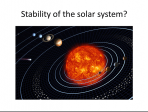 01:26:00
01:26:00
Curious maths: finding the solution
Unsolved problems in mathematics have intrigued us for centuries. It took over 350 years for anyone to provide a proof for Fermat's Last Theorem, considered by many as the most notorious problem in the history of mathematics, and no one has yet offer....
More details | Watch now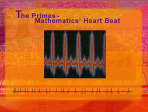 01:26:00
01:26:00
Curious maths: finding the solution
Unsolved problems in mathematics have intrigued us for centuries. It took over 350 years for anyone to provide a proof for FermatÕs Last Theorem, considered by many as the most notorious problem in the history of mathematics, and no one has yet offe....
More details | Watch now 01:01:00
01:01:00
Dark, clowdy and impertinent’ – Thomas Browne’s scientific language
Succulent, cretaceous, technology, parasitical, electricity . . . Scientific investigation in the seventeenth century generated new ideas, and scientists needed new words to express them. Experimentalists, observers, collectors, and technicians all c....
More details | Watch now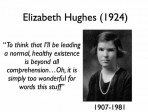 01:12:00
01:12:00
Deciphering disease: cells and disruption of their communication
The human body may seem to be no more than a bundle of tissues and organs, yet the cells these are made from are capable of interacting, communicating and performing complex tasks. Our cells' capacity to interact in this way enables humans to adapt t....
More details | Watch now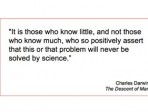 01:06:00
01:06:00
Decoding consciousness
Everything we know about the world comes to us through our brain. Yet for each of us our own conscious mental world of thoughts and feelings is isolated and private. Despite centuries of research, language or gesture remains the only way we can disco....
More details | Watch now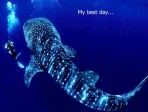 00:33:00
00:33:00
Deep sea discoveries
Recent underwater images show that the deep sea realm of the British Isles is nothing like the monotonous expanse of mud that many people imagine. Spectacular coral reefs, once thought to be restricted to the tropics, are now known to occur in the ch....
More details | Watch now 00:44:00
00:44:00
Defining nature’s limits: Prosecuting magic in sixteenth-century Italy
Magic and science have traditionally been considered to have little in common. Yet for many sixteenth-century intellectuals, including churchmen, practising magic was based upon highly sophisticated knowledge of the natural world. For ecclesiastical ....
More details | Watch now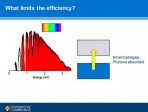 01:02:00
01:02:00
Developing new solar cells – cheaper, or more efficient?
Using solar cells to convert sunlight to electricity is an attractive way to reduce carbon emissions, but solar cells are still too expensive to be installed on the scale required. The next generation of solar cells aim to solve this problem using st....
More details | Watch now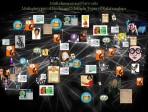 00:45:00
00:45:00
Developing Web Science for the 21st century.
Recent advances in Web Science provide comprehensive digital traces of social actions, interactions, and transactions. These data provide an unprecedented exploratorium to model the socio-technical motivations for creating, maintaining, dissolving, a....
More details | Watch now 01:01:00
01:01:00
Discovery of a dynamic atmosphere at one of Saturn’s moons, Enceladus
In recent years, Enceladus, Saturn's sixth largest moon, has become a major attraction for scientists, with many believing it offers the best hope we have of discovering other life in our solar system. NASA's Cassini spacecraft has been orbiting Satu....
More details | Watch now 01:35:00
01:35:00
Dive into the thrilling and extraordinary world of science
Take one step away from the shore with the Royal Society Winton Prize for Science Books. Set yourself apart from the crowd on an expedition into unfamiliar scientific territory with the shortlisted authors and judges of the Royal Society Winton Prize....
More details | Watch now 00:30:00
00:30:00
Dream to reality?
Plastics pioneers had great aspirations for their new materials. Roland Barthes called plastics “a miraculous substance . . . a transformation of nature”. Serendipity, careful experimentation and entrepreneurial skills have all played significant....
More details | Watch now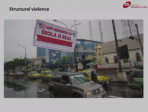 01:31:00
01:31:00
Ebola: inside an epidemic
Find out what we have learnt from the outbreak so far (March 2015) and what is being done to ensure continued resilience to epidemic scenarios.
More details | Watch now 00:56:00
00:56:00
Einstein’s legacy as scientist and icon
What might 'new Einsteins' achieve in the 21st century? Science offers more intellectual challenges than ever, but is a less individualistic enterprise. Technology offers imense opportunities, but poses threats and ethical dilemmas. Can scientists re....
More details | Watch now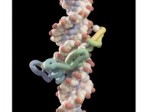 01:08:00
01:08:00
Engineered zinc finger proteins and gene expression
It has long been the goal of molecular biologists to design DNA binding proteins for the specific control of gene expression. The zinc finger design, discovered by Sir Aaron Klug 20 years ago, is ideally suited for such purposes, discriminating betwe....
More details | Watch now 00:46:00
00:46:00
Enhancing communication and structured data on the Web
Rigid interfaces force people to present or look at information the wrong way. We need a new generation of flexible Web tools that help people gather the information they want from wherever it is, organize it however they like, create the interaction....
More details | Watch now 00:59:00
00:59:00
Everest, the first ascent: the untold story of the man who made it possible
The conquest of Everest by a British team in 1953 has always been celebrated as a triumph of heroic leadership, team work and courageous climbing, but the vital role that scientific innovation played in the success of the expedition has never been wi....
More details | Watch now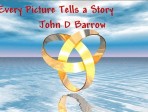 01:16:00
01:16:00
Every picture tells a story
We will look at the role of pictures and images in the development of science. From the first graphs and illustrated books to Molscript, the influence of the first pictures of spiral galaxies on Van Gogh's 'Starry Night', to the artistic resonances o....
More details | Watch now 00:57:00
00:57:00
Experimental misunderstandings: the precedent of Francis Bacon’s ‘Sylva Sylvarum’ and the beginnings of the Royal Society
Guido Giglioni is the Cassamarca Lecturer in Neo-Latin Culture and Intellectual History at the Warburg Institute, University of London. By writing a number of natural histories and above all the Sylva Sylvarum, Bacon set an important but difficult pr....
More details | Watch now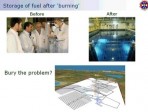 00:49:00
00:49:00
Extracting value from waste through a little chemistry with U
Uranium is one of the most famous, or perhaps infamous elements. It is the heaviest naturally occurring element, and sits amongst the metals at the bottom of the periodic table that fill their f-orbitals with electrons. Uranium and its oxides come in....
More details | Watch now 01:04:00
01:04:00
Eyes on the stars – Space as inspiration
Piers Sellers in conversation with Rona Munro and John Zarnecki. Little Eagles, written by playwright Rona Munro, tells the extraordinary story of Sergei Korolyov, chief designer and unsung hero of the Soviet space programme. Under the leadership o....
More details | Watch now 01:02:00
01:02:00
Finding Moonshine: A Mathematician’s journey.
Symmetry is all around us. Our eyes and minds are drawn to symmetrical objects, from the sphere to the swastika, from the pyramid to the pentagon. Of fundamental significance to the way we interpret the world around us, this unique phenomenon indicat....
More details | Watch now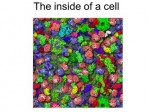 01:07:00
01:07:00
Finding patterns in genes and proteins: decoding the logic of molecular interactions
Dr Sarah Teichmann is based at the MRC Laboratory of Molecular Biology at the University of Cambridge. In the post-genomic era, high-throughput methods are providing us with a deluge of data about genes and proteins. What knowledge about biology do....
More details | Watch now 01:01:00
01:01:00
Finding the right balance: from rare gases to ribosomes
In this lecture Carol discusses the developments in accurately weighing atoms and molecules, from the earliest experiments used to examine gases through to the analysis of organic chemicals. She describes how she and other researchers developed innov....
More details | Watch now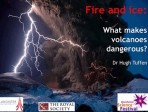 01:03:00
01:03:00
Fire and ice: What makes volcanoes dangerous?
Some volcanoes are gentle, others inconvenient, and others still, deadly. What makes volcanic eruptions explosive? What happens when volcanoes are covered in ice, as in Iceland or Chile - and what happens when the ice melts? Dr Hugh Tuffen has visi....
More details | Watch now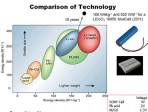 01:03:00
01:03:00
Following function in real time
Kavli Medal Lecture by Professor Clare Grey FRS. The development of light, long-lasting rechargeable batteries has been an integral part of the portable electronics revolution. This revolution has transformed the way in which we communicate and t....
More details | Watch now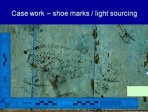 01:37:00
01:37:00
Following the fingerprints
From fingerprints to blood spatter, forensic techniques has greatly improved the criminal justice system ever since the discovery of DNA fingerprinting. The seemingly amazing results of these techniques have greatly increased the importance of forens....
More details | Watch now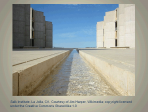 00:54:00
00:54:00
Francis Crick: anti-vitalist activist
In the course of his scientific career, Francis Crick changed research fields several times. In almost 30 years at the MRC Laboratory of Molecular Biology in Cambridge, he worked on protein crystallography, molecular genetics, developmental cell biol....
More details | Watch now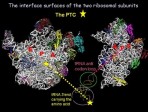 01:03:00
01:03:00
From bears’ winter-sleep to advanced antibiotics
Professor Ada Yonath, Weizmann Institute of Science, Israel. To facilitate instant recovery of active life once bears wake up from their winter sleep, nature provides ingenious mechanism based on periodic packing of their ribosomes, the cellular ma....
More details | Watch now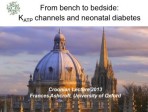 00:47:00
00:47:00
From bench to bedside: KATP channels and neonatal diabetes
Whether you eat a whole box of chocolates or fast for the day, the pancreatic beta-cells ensure that your blood glucose level remains relatively constant by regulating the release of insulin from the pancreatic beta-cells. Diabetes results when insul....
More details | Watch now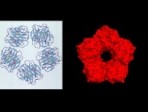 01:08:00
01:08:00
From proteins to drugs
The normal proteins which circulate in human blood are either known or presumed to have beneficial functions. However normal immunity and inflammation proteins can cause or exacerbate disease in addition to helping to resist infections.
More details | Watch now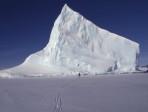 01:20:00
01:20:00
From sled dogs to rockets. Up the poles.
As part of the celebrations for International Polar Year, Paul Rose takes us on an insightful science journey to the Antarctic and the Arctic. What really are the challenges facing scientists as they work in the remotest field sites on earth?
More details | Watch now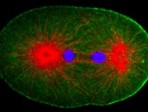 01:05:00
01:05:00
Genes, worms and the new genetics
A surprising finding over the past 20 years is that all animals have many of the same genes and that they use them in similar ways to grow and develop. These similarities mean that much of what is learned about what genes do in simple animals such as....
More details | Watch now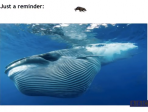 01:01:00
01:01:00
Genetic control and the mammalian radiation
To grow tissues in our body two key types of DNA control how, where and when to build essential proteins. Recent comparisons of mammal genomes show that instructions coding how to build proteins are similar across diverse species. In contrast the gen....
More details | Watch now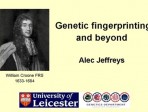 01:07:00
01:07:00
Genetic fingerprinting and beyond
Professor Jeffreys will describe how DNA typing can be used to solve casework and will review the latest developments, including the creation of major national DNA databases that are proving extraordinarily effective in the fight against crime.
More details | Watch now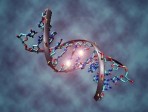 01:17:00
01:17:00
Genetics, epigenetics and disease
The human genome sequence has been available for more than a decade, but its significance is still not fully understood. While most human genes have been identified, there is much to learn about the DNA signals that control them. This lecture describ....
More details | Watch now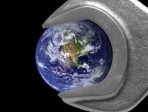 01:02:00
01:02:00
Geoengineering: a brave new world?
This is a very new and rapidly developing area of science and technology and the proposals range from placing giant mirrors in space to reflect sunlight to fertilising the oceans with nutrients in order to produce more phytoplankton to soak up atmosp....
More details | Watch now 00:43:00
00:43:00
Ghosts of women past
Dr Patricia Fara, Clare College, Cambridge. "I do not agree with sex being brought into science at all. The idea of 'woman and science' is completely irrelevant. Either a woman is a good scientist, or she is not." So declared Hertha Ayrton over hun....
More details | Watch now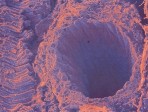 01:03:00
01:03:00
Hard questions: Contemporary art and the obsession with science
Siƒn Ede looks at the work of a number of leading artists who have engaged with contemporary science, whether robustly or subtly, in order to reflect a different and sometimes bizarre take on new ideas.
More details | Watch now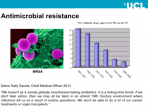 01:00:00
01:00:00
Harnessing the power of mobile phones and big data for global health
Infectious diseases rank among the gravest threats to human health alongside global warming and terrorism. New strains continue to evolve every year and can spread rapidly. The consequences can be devastating. The 1918 Spanish flu killed an estimated....
More details | Watch now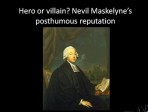 00:49:00
00:49:00
Hero or villain? Nevil Maskelyne’s posthumous reputation
Nevil Maskelyne, 5th Astronomer Royal and Fellow of the Royal Society, is today best known as the villain of Dava Sobel’s Longitude. This talk will, however, look further back and examine how Maskelyne has fared since his death in 1811, attempting ....
More details | Watch now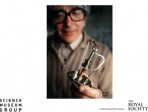 01:02:00
01:02:00
Heroes of science
Scientists love them. Historians of science can't stand them. The view that science rests on the shoulders of heroes and on them alone cannot be defended. Nonetheless, the public are moved and inspired by the stories of astronauts who've risked their....
More details | Watch now 01:08:00
01:08:00
Housing for a low carbon energy future.
Almost half of the UK 's energy is used in buildings to provide a safe, healthy, comfortable, productive and fun environment. Most future low carbon scenarios assume significant reductions in carbon emissions associated with the built environment ove....
More details | Watch now 01:01:00
01:01:00
How embryos build organs to last a lifetime
All the organs of our body originate from small founder populations of cells which multiply into complex structures. ÊAdult stem cells are used to maintain organs throughout adult life and to repair or regenerate them after damage.Ê Focusing on the....
More details | Watch now 01:00:00
01:00:00
How new science is transforming the optical microscope
There are two rules for making an optical microscope; the lenses must be small, since defects of colour and focus increase with lens size, and the lenses must capture light from the object over as wide an angle as possible to record fine detail. This....
More details | Watch now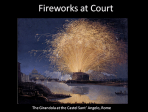 01:01:00
01:01:00
Incendiary science: fireworks at the Royal Society
In the seventeenth and eighteenth centuries, fireworks offered some intriguing possibilities for scientific research among the experimental philosophers of the Royal Society. What was the nature of fire? How did combustion work? Why did gunpowder exp....
More details | Watch now 01:06:00
01:06:00
Information theory meets writing
Professor MacKay talks about Dasher, and other communication systems designed using information theory; especially communication systems aimed at disabled people.
More details | Watch now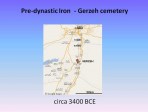 00:55:00
00:55:00
Iron from the sky: the potential influence of meteorites on ancient Egyptian culture.
Ancient Egyptian belief was frequently derived from observations of the natural world, where the gods were considered to control the forces of nature; and as a society, ancient Egyptians placed great value upon order and balance. So how would the app....
More details | Watch now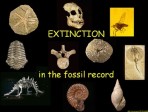 01:34:00
01:34:00
Is biodiversity going the way of the Dodo?
Panel discussion with Professor Jonathan Baillie, Dr William Cheung, Professor Adrian Lister and chaired by Dr Susan Lieberman, as part of the Royal Society Summer Science Exhibition 2011. Right now one-fifth of the world’s vertebrates are classi....
More details | Watch now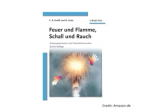 01:05:00
01:05:00
Is chemistry really so difficult?
Chemistry has progressed in a way few outsiders appreciate. It underpins many other sciences; from genomics and molecular biology, food and sports science, through to cosmology and planetary science. Why hasn't the public impression of chemistry evol....
More details | Watch now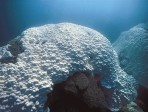 01:01:00
01:01:00
Is the Great Barrier Reef on Death Row?
Professor J.E.N Veron, the former Chief Scientist of the Australian Institute of Marine Science and widely regarded as the world's leading authority on coral reef ecosystems, presents the effects that climate change is having on coral reefs.
More details | Watch now 01:15:00
01:15:00
Islam and science: beyond the troubled relationship
The basic sources of Islam - the Qur'an and the traditions of the Prophet Muhammad - place a great deal of importance on science. So, theoretically, the relationship between Islam and science is both close and very deep. It was this relationship that....
More details | Watch now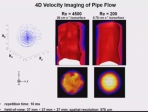 00:59:00
00:59:00
It’s magnetic resonance – but not as you know it
Magnetic resonance imaging (MRI) is routinely used in hospitals to image internal structure and blood flow within the human body. Research has shown that it is possible to harness these techniques to study non-biological systems, with many applicatio....
More details | Watch now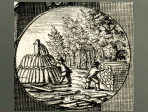 00:53:00
00:53:00
John Evelyn’s ‘Sylva’ and the origins of the modern sustainability discourse
The idea of sustainability has deep roots in practically all cultures of the world. The term itself, however, so familiar in today's global vocabulary, was shaped in the 17th century European discourse on timber shortage. Initiated by the newly-estab....
More details | Watch now